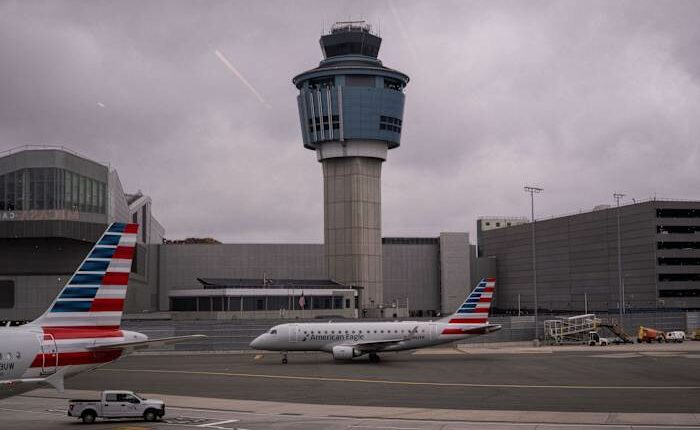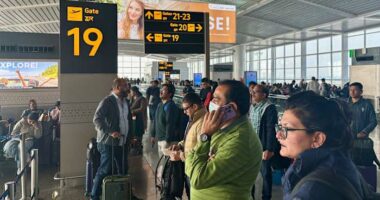Share this @internewscast.com

The Federal Aviation Administration (FAA) announced on Friday that it will ease some of the flight restrictions previously imposed on commercial flights at 40 major U.S. airports during the recent government shutdown.
The agency revealed that the current mandatory flight reductions, initially set at 6%, will be decreased to 3%. This adjustment comes despite the end of the record-breaking 43-day shutdown on November 12. Transportation Secretary Sean Duffy emphasized that these restrictions would remain in place until staffing levels at air traffic control centers stabilize and safety standards are met.
Implemented on November 7, the unprecedented order led to the disruption of thousands of flights nationwide. FAA leadership pointed to concerning data, indicating the necessity of such measures to alleviate the stress on the aviation system as the shutdown extended into a second month, with a noticeable increase in air traffic controller absences. Many controllers, unpaid for over a month, reported financial difficulties, prompting them to seek additional work.
Initially, the flight reductions began at 4% and eventually increased to 6%. Although the FAA had anticipated a 10% reduction, further increases were paused as more controllers returned to work amid reports that Congress was nearing an agreement to conclude the shutdown.
Throughout the impasse, air traffic controllers missed two paychecks, adding to their financial burdens.
While Secretary Duffy has not disclosed the detailed safety data that necessitated the flight cuts, he referenced reports during the shutdown period of incidents such as planes flying too closely together, more frequent runway incursions, and pilots expressing concerns over controllers’ responsiveness.
How long it will take for the aviation system to stabilize is unclear. The flight restrictions upended airline operations in just a matter of days. Many planes were rerouted and aren’t where they’re supposed to be. Airlines for America, the trade group of U.S. airlines, warned there could be residual effects for days.
Some experts predicted the problems could linger longer but airline executives were optimistic that flying could quickly return to normal ahead of the busy Thanksgiving travel week.
The nationwide shortage of controllers isn’t new, but the shutdown put a spotlight on the problem and likely made it worse. Duffy said that by the end of the shutdown, 15-20 controllers were retiring daily and some younger controllers were leaving the profession.
Copyright 2025 The Associated Press. All rights reserved. This material may not be published, broadcast, rewritten or redistributed without permission.













